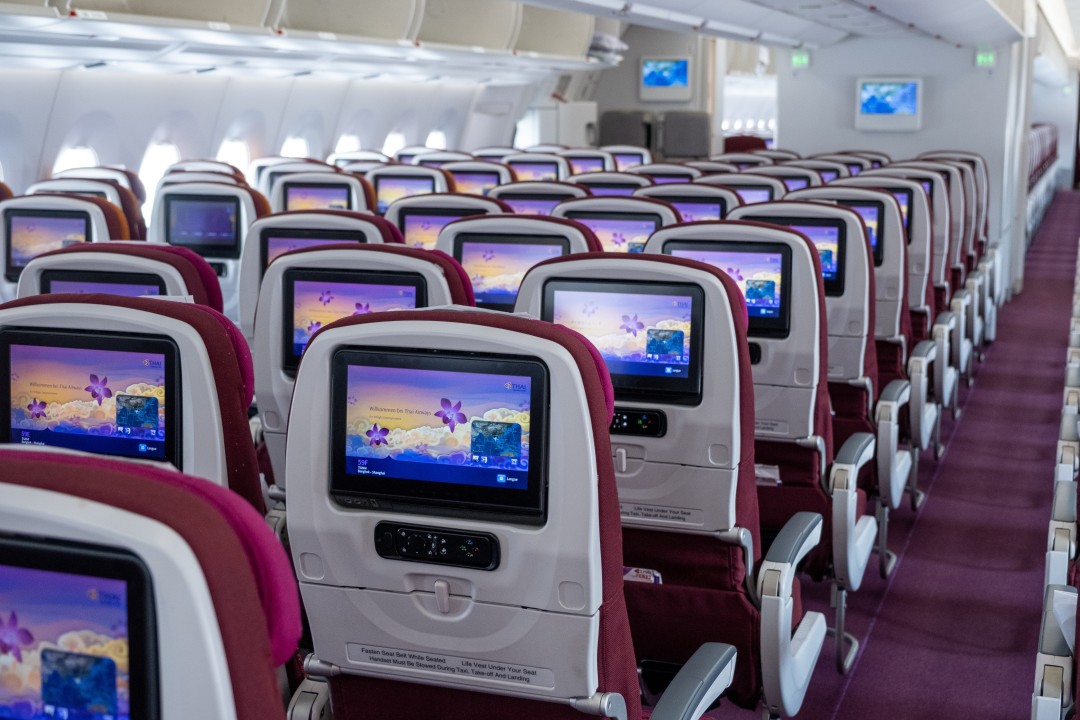Travelers may hunt for budget-friendly travel options, but that doesn’t diminish their appreciation for luxury experiences. Industry insiders predict a significant shift in in-flight entertainment, with electronic tablets becoming the new standard for airborne amusement. This evolution is not just about offering more content but also about enhancing the passenger experience with the convenience and flexibility that modern technology provides.
The Advent of Tablet-Based Entertainment in Aviation
American Airlines has been at the forefront of this shift, having placed an order for 6,000 Samsung Galaxy Tablets 10.1. These devices are set to replace the traditional in-flight entertainment systems on a variety of the airline’s routes, including transcontinental and international flights. The initiative reflects a broader industry trend towards lightweight, versatile, and easily updatable entertainment solutions.
Premium Passengers to Benefit First
The deployment of these tablets will initially cater to American’s premium cabin passengers. Business and first-class travelers on select flights to Europe, South America, and key domestic routes such as JFK to Los Angeles or San Francisco will be the first to enjoy this upgraded experience. The tablets will come preloaded with a diverse selection of TV shows, movies, music, and games, with additional content available for download on Wi-Fi-enabled flights, albeit for a fee.
Why Tablets Are Overtaking Traditional Systems
The move towards tablet-based entertainment is driven by several factors. Tablets are significantly lighter than seatback systems, which can contribute to fuel savings—a critical consideration in an industry where efficiency is paramount. Additionally, the ease of updating and maintaining tablets compared to fixed systems is a game-changer. A malfunctioning tablet can be swiftly replaced, avoiding the inconvenience of a passenger being left without entertainment when no alternative seats are available.
The Bigger Picture: Trends and Statistics
While American Airlines’ adoption of tablets is noteworthy, it’s part of a larger trend in the aviation industry. According to a report by Valour Consultancy, the in-flight entertainment market is expected to grow significantly, with wireless solutions like tablets playing a key role. The report suggests that by 2027, the market could be worth $8.4 billion, nearly doubling from its 2018 value.
Interestingly, a survey by TripAdvisor found that 25% of respondents would choose one airline over another if it offered Wi-Fi, indicating the importance of connectivity and digital entertainment to today’s travelers. Moreover, the environmental impact of lighter in-flight entertainment systems is a rarely discussed but significant benefit, as airlines strive to reduce their carbon footprint.
In conclusion, the integration of tablets into in-flight entertainment systems is a strategic move that aligns with passenger preferences for modern, flexible, and high-quality entertainment options. As airlines continue to innovate, we can expect to see more personalized and technologically advanced solutions taking to the skies.
For more information on the latest in-flight entertainment trends, visit the International Air Transport Association (IATA) and explore their insights on passenger experience innovations. To understand the environmental impacts of aviation technology, the International Council on Clean Transportation (ICCT) offers comprehensive research and data.
